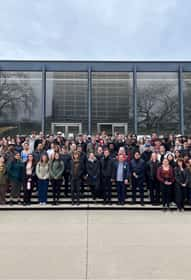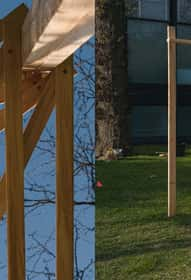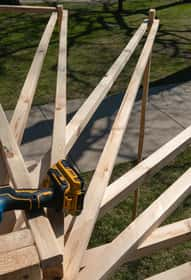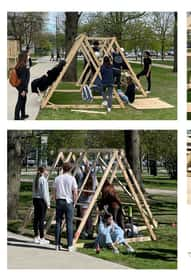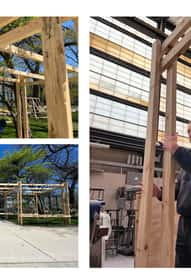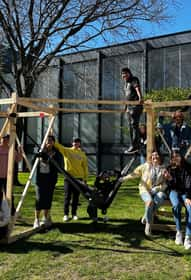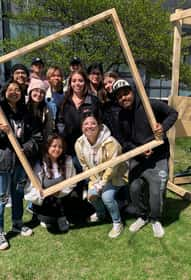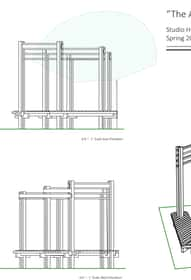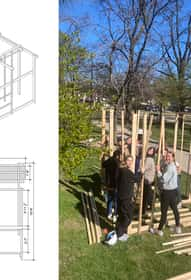B.ARCH First Year Studio Fall
HomeProfessors:
- Adam Fogel •
- Andres Camacho •
- Anthony Hurtig •
- Colleen Humer •
- Heidrun Hoppe
Students:
- Diane Borshch •
- Paul Lee •
- Yueyi Li •
- Anna Ertsgaard •
- Jilliana Pilutti •
- Lauren Jimenez •
- Diego Barcenas •
- Abigail Hossler
ARCH 113 ARCHITECTURE STUDIO I : SKILLS
Arch 113 is an exploration of the elemental actions of architecture. Students are introduced to the design process as a relationship between inquiry and action, between critical thought and product. Learning to see and act critically is inherent in the discipline of architecture, and a variety of drawing and modeling processes are essential to communicate that critical thought process. Students explore multiple solutions for each assignment through iterative processes, and discover that the many modes of drawing and modeling are integral to the generative process (invention), not just tools of representation (recording).
Arch 113 introduces architectural principles and explores the design of space using the fundamental elements of architectural language. The studio addresses composition, design processes, representational media and
methodologies, craftsmanship, graphic and verbal communication, and analytical thinking. Design projects investigate the elements of architecture initially through abstract design problems, gradually introducing scale, the human figure, and context. The semester emphasizes hand drawing and physical modeling processes that move from two-dimensional to three-dimensional representation. Physical modeling techniques of cutting, folding, bending, extruding, and solid/void volumetric massing are employed to explore methods of envisioning and representing habitable space. Hand and digital drawing are explored as means to communicate design intentions.
00 SKILLS
Paralleling the main assignments throughout the term, the skills assignments were designed to sharpen the students’ hand-drawing skills, their eye for composition and their craft. Each assignment required the students to execute pencil drawings on 2 sheets of 11 x 17” grid paper. As an accompaniment to the drawing skills assignments, the students also did two writing assignments. The written assignments were designed to enlarge the students’ architectural vocabulary and make them more articulate, in both written and spoken forms.
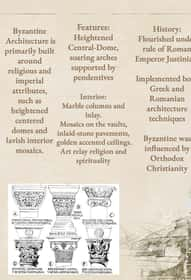
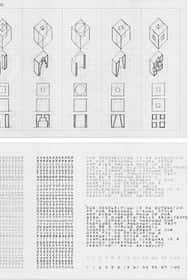
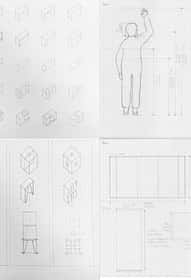
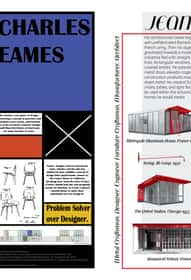
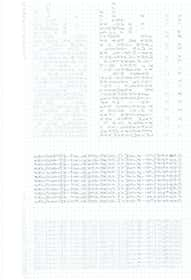
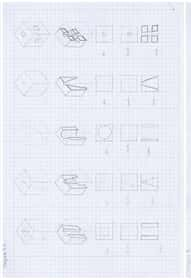
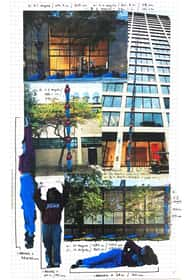
Professors:
- Adam Fogel •
- Chana Haouzi •
- Colleen Humer •
- Drew Ranieri •
- Ellen Mills
Students:
- Sarah Heo •
- Casey Kowalsky •
- Viktoriya Maneva •
- Minkyung Oh •
- Benjamin Omark •
- Puja Sherpa •
- Rufino Vasquez •
- Peyton Wade •
- Magdalena Wegrzyniak •
- Sofie Hudon Rios •
- Cristian Beltran •
- Jordan Bradlim •
- Anika Gerken •
- Stephanie Gutierraz •
- Ibarra Mahmoud •
- Ibrahim Meliana •
- Julien Yeong •
- Jae Lee •
- Paul Lim •
- Dalila Perez •
- Duyen Tran •
- Jonathan Trnka •
- Sebastian Zamora •
- Ahmed Arellano •
- Bekoe Ertsgaard •
- Freydell Harper •
- Heichel Kalman •
- Nagi Orr •
- Pilutti Saleemi Shrirao •
- Ruqiyah Oladejo •
- Admir Pali •
- Elijah Paschke •
- Eleana Pena •
- Morgan Rittenhouse •
- Mubarka Ali •
- Diego Barcenas •
- Jasmine Chung •
- Abigail Hossler •
- Suyeon Ji •
- Lauren Jimenez •
- Jeonghyun Lee •
- Nicholas Miller
ARCH 113 ARCHITECTURE STUDIO I : GIMME SHELTER
Considering historical discussions exploring the idea of basic shelter, each studio group, using the materials provided: 1, 9 x12 tarp and 12, 1 x 2 x 8’ sticks, designed and built a basic shelter located on the field to the North of Crown Hall. The shelter had to accommodate a minimum of 2 people, but most accommodated the complete studio group.
Shelter
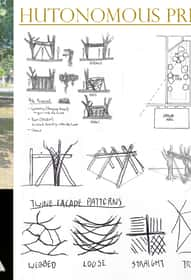
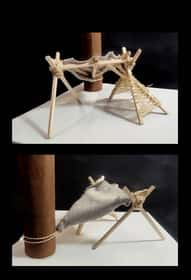
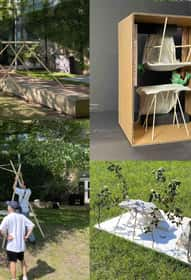
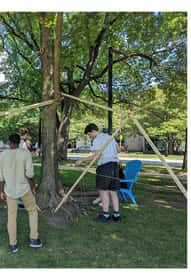
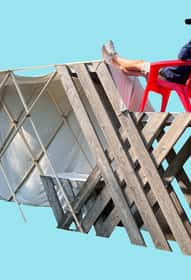
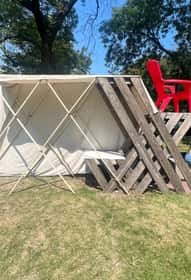
Professors:
- Adam Fogel •
- Andrews Camacho •
- Anthony Hurtig •
- Chana Haouzi •
- Collen Humer •
- Dillon Pranger •
- Ellen Mills •
- Kathleen Nagle •
- Kristen Landmark Masih
Students:
- Narjis Jafferi •
- Diego Vizcaino •
- Ronan Schneider •
- Angelica Conwell •
- Iona Pettigrew •
- Peyton Wade •
- Sarah Heo •
- Allison Murray •
- Duyen Tran •
- Jonathan Trnka •
- Sage Bazer •
- Luciana Sierra Gomez •
- Ayesha Ahmed •
- Aliyan Saleemi •
- Nicholas Miller
ARCH 113 ARCHITECTURE STUDIO I : GEOMETRY
Students learned to construct various geometric figures using only a compass, a straightedge and a pencil. They then constructed those figures on 3 sheets of 9 x 12” paper showing construction lines and using different line weights to describe the constructions; in their compositions. they were asked to consider the relationship between construction and the constructed figure and between the figures.
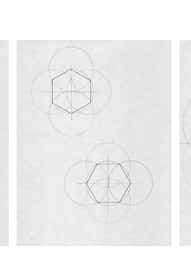
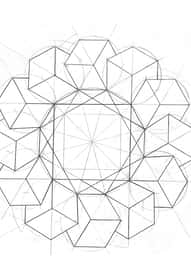
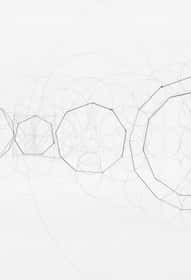

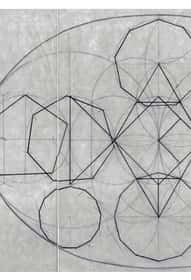
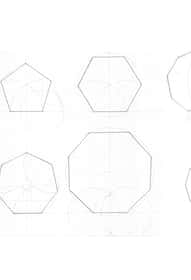
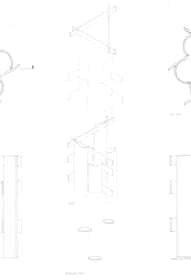
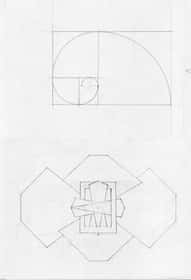
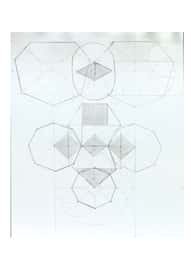
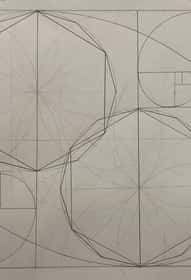
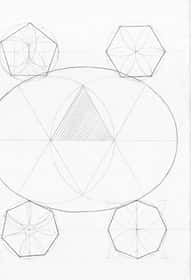
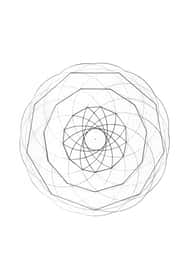
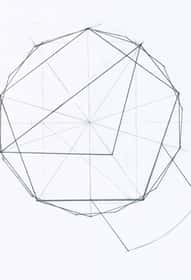
Professors:
- Adam Fogel •
- Andrews Camacho •
- Anthony Hurtig •
- Chana Haouzi •
- Colleen Humer •
- Dillion Pranger •
- Drew Ranieri •
- Ellen Mills •
- Kathleen Nagle •
- Kirsten Landmark Masih
Students:
- Olivia Jameson •
- Lorentz Lankoande •
- Elizabeth Arriaga •
- Camila Powers Restrepo •
- Rahel Valdovinos Vega •
- Mitya Vautrin •
- Iona Pettigrew •
- Ronan Schneider •
- Mariam Abdelfattah •
- Angelica Conwel •
- Adam Mulka •
- Peyton Wade •
- Benjamin Omark •
- Casey Kowalsky •
- Minkyung Oh •
- Puja Sherpa •
- Andrew Wu •
- Subash Alapati •
- Luisa Vallerosafefrna •
- Aicha Kahack •
- Kailey Suquisupa •
- Jadedon Narain •
- Allison Murray •
- Paul Lim •
- Jonathan Trnka •
- Duyen Tran •
- Emma Rice •
- Rebecca Kanarski •
- Simon Nagi •
- Jilliana Pilutti •
- Aliyan Saleemi •
- Diego Barcenas •
- Jasmin Chung •
- Abigail Hossler •
- Lauren Jimenez •
- Elijah Paschke •
- Eleana Pena
ARCH 113 ARCHITECTURE STUDIO I : FIELDS
Using their knowledge of geometric construction along with an image from Alex MacLean’s book, Designs on the Land, students were asked to compose, reveal and cut a field on a sheet of 22 x 30” Fabriano paper. They were instructed to use geometric construction to build a relationship between the image and the field condition being explored, to set up a structure that defined and guided the construction of the field based on the implied geometry of the image, and to make a distinction between the geometry being drawn to set up the construction of the field and the constructed field. Next they used cutting and folding techniques to make the field visible, considering, that cutting and folding should create the distinction between geometry as structure and geometry as field.
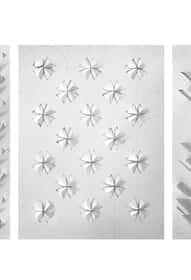
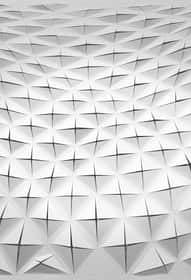
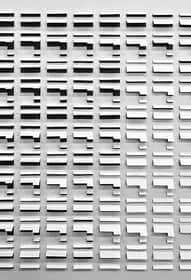
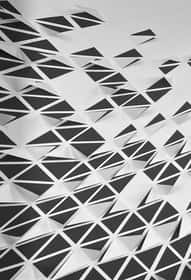
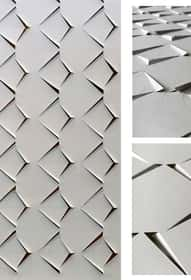
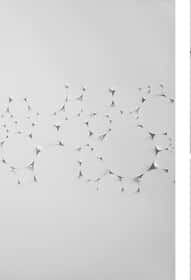
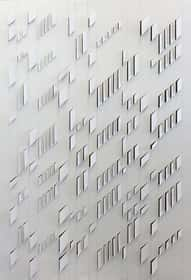
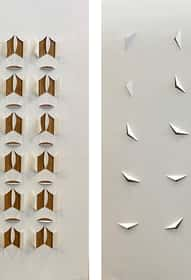
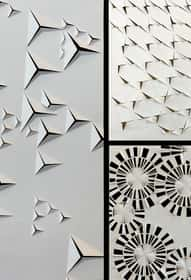
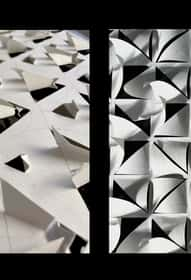
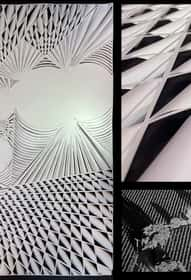
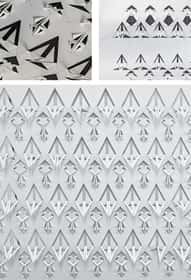
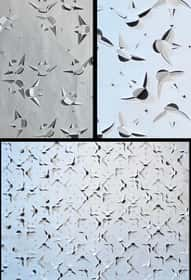
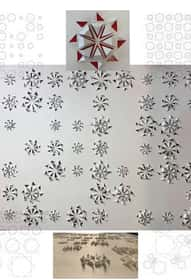
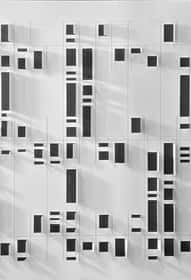
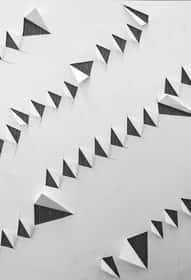
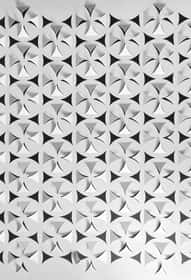
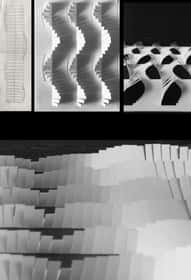
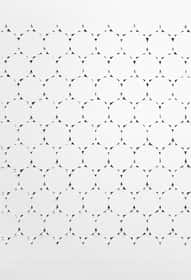
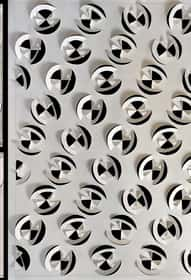
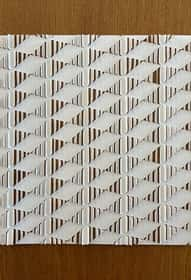
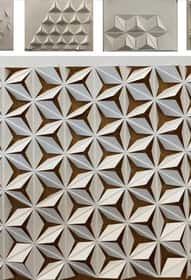
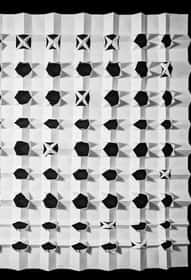
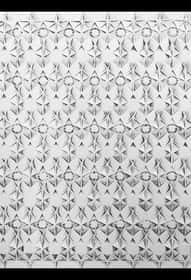
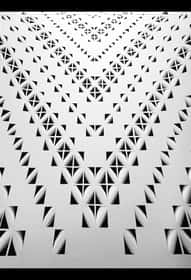
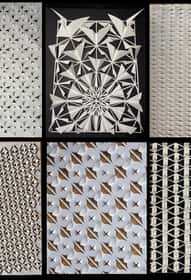
Professors:
- Chana Haouzi •
- Collen Humer
Students:
- Yeong Jae Lee •
- Paul Lim •
- Jonathan Trnka
ARCH 113 ARCHITECTURE STUDIO I : MEASUREMENT
This project explored scale in architecture by examining the scale and proportions of everyday objects and looked at buildings on campus, in particular Carr Chapel. Each student drew measured plans, sections, (elevations) of objects, in imperial and metric, and finally of Carr Chapel. They measured the building as a group and approximated those measurements, using their body, that were unattainable. In addition to drawing, they also modeled the building.
ment
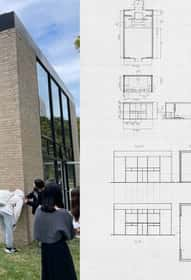
Professors:
- Adam Fogel •
- Andrew Camacho •
- Anthony Hurtig •
- Chana Haouzi •
- Collen Humer •
- Dillon Panger •
- Drew Ranieri •
- Ellen Mills •
- Kathleen Nagle •
- Kirsten Landmark Masih
Students:
- Olivia Jameson •
- Nicole Rendon •
- Narjis Jafferi •
- Haochen Geng •
- Sara Cattenoy •
- Ronan Schneider •
- Mitya Vautrin •
- Mariam Abdelfattah •
- Angelica Conwell •
- Viktoriya Maneva •
- Sarah Heo •
- Casey Kowalsky •
- Andrew Wu •
- Mushraf Kahn •
- Victoria Pakos •
- Kailey Suquisupa •
- Yeongjae Lee •
- Paul Lim •
- Jonathan Trnka •
- Duyen Tran •
- Luciana Sierra Gomez •
- Nathan Kalman Ayesha Ahmed •
- Illiana Pilutti •
- Aliyan Saleemi •
- Morgan Rittenhouse •
- Lauren Jimenez •
- Jasmine Chung
ARCH 113 ARCHITECTURE STUDIO I : SPACE
This was is a series of exercises in drawing and physical model-making in which students explored the process of moving from two, to three, dimensions and discovered ways in which the fundamental elements of architecture, base plane (ground), overhead plane (ceiling), vertical plane (wall), and line (column) could be composed to form different types of space. Students first selected an area from their Assignment 6 field studies and through a series of extruded axonometric drawings and models, developed a specific area of the previous study into a three-dimensional volume. Using drawing and physical models to explore the relationship of architectural elements, the spaces they create, and human scale; they assumed a scale of 1/4” = 1’0” and considered how a human experienced and navigated the space created. They documented their spaces with physical models and orthographically projected drawings as well as oblique (axonometric) drawings.
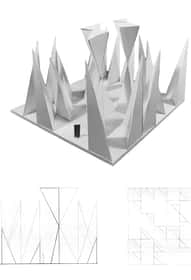
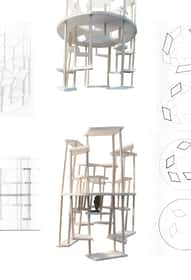
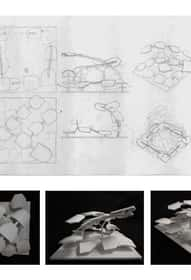
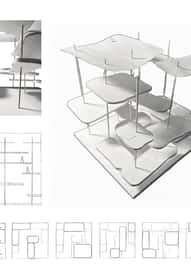
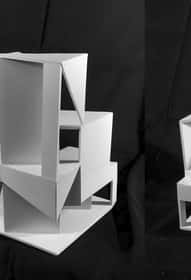
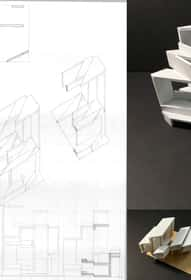
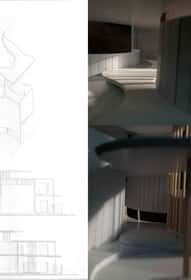
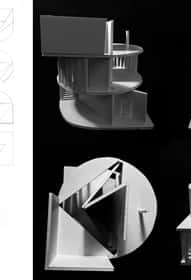
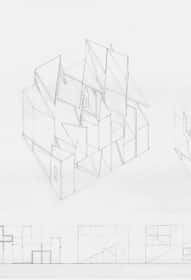
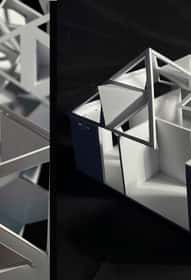
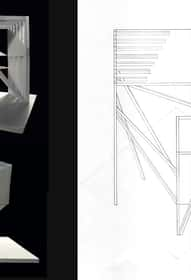
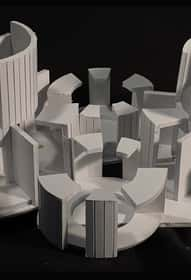
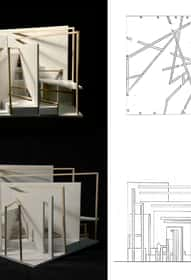
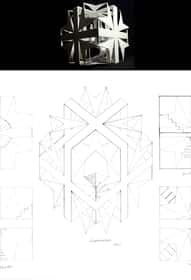
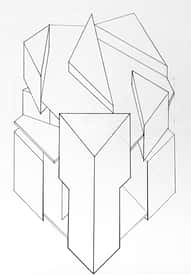
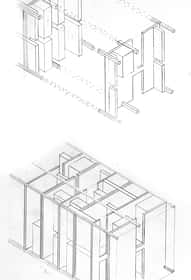
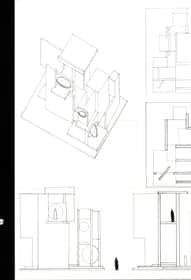
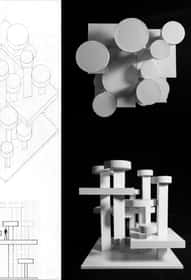
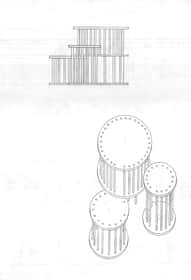
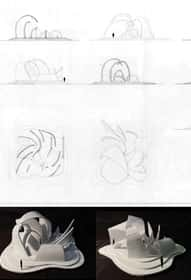
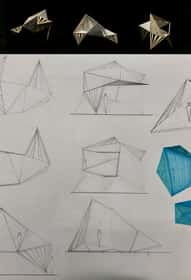
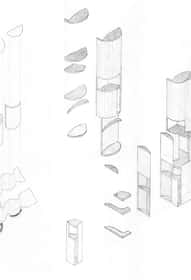
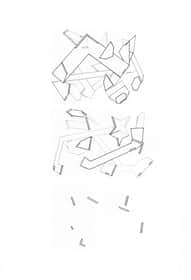
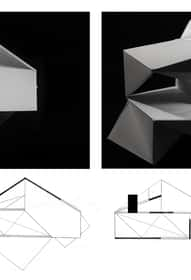
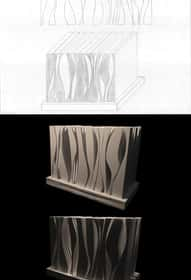
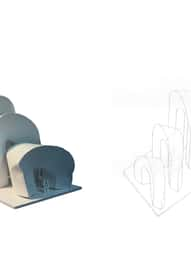
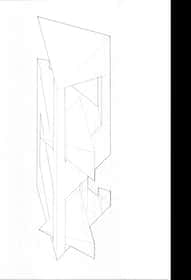
Professors:
- Adam Fogel •
- Andres Camacho •
- Anthony Hurtig •
- Chana Haouzi •
- Collen Humer •
- Dillion Pranger •
- Drew Ranieri •
- Ellen Mills •
- Hiedrun Hoppe •
- Kathleen Nagle •
- Kirsten Landmark Masih
Students:
- Olivia Jameson •
- Haochen Geng •
- Elizabeth Arriaga •
- Diego Vizcaino •
- Sara Cattenoy •
- Iona Pettigrew •
- Mariam Abdelfattah •
- Mitya Vautrin •
- Jair Delgado •
- Angelica Conwell •
- Adam Mulka •
- Ronan Schneider •
- Vinati Tallapragada •
- Quiyu Feng •
- Sarah Heo •
- Rufino Vasquez •
- Minkyung Oh •
- Peyton Wade •
- Casey Kowalsky •
- Andrew Wu •
- Sophia Hamala •
- Shazaib Dawood •
- Mackenzie Nelson •
- Kayla Allen •
- Judai Smith •
- Darrion Lee •
- Andrew Nichols •
- Victoria Pakos •
- Kailey Suquisupa •
- Kacper Drag •
- Allison Murray •
- Yeongjae Lee •
- Paul Lim •
- Jonathan Trnka •
- Duyen Tran •
- Jill Cavin •
- Yueyi Li •
- Rebecca Kanarski •
- Margarita Espana •
- Ajavier Balkum •
- Simon Nagi •
- Sarai Arellano •
- Nathan Kalman •
- Jilliana Pilutti •
- Suyeon Ji •
- Ruqiyah Oladejo •
- Jasmine Chung
ARCH 113 ARCHITECTURE STUDIO I : CARR PAVILION
This project explored the design of a small gathering space located on a site next to Carr Chapel. The primary objective of this gathering space was to provide a community-focused outdoor extension for activities related to Carr Chapel, including outdoor meetings, performances, opportunities for casual gatherings, or specific events and programs. The interior/exterior continuity of spaces and attention to site and context was of primary importance. The size of the covered area was a maximum of 600 square feet, however, the overall area of the project was larger and included other site modifications such as paths, landscaping, etc. Students did site and program analysis, and research before generating concept diagrams and documented the project in drawing and with basswood models.
Pavilion
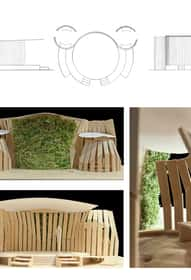
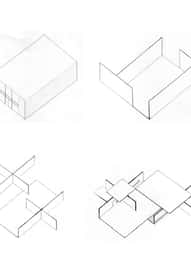
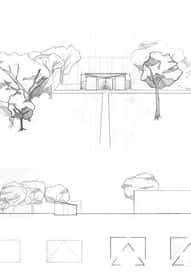
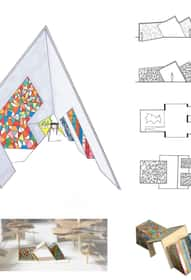
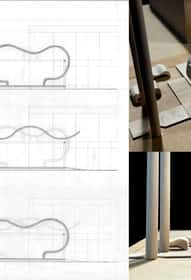
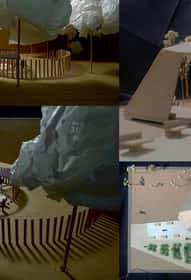
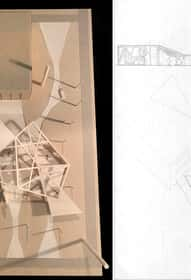
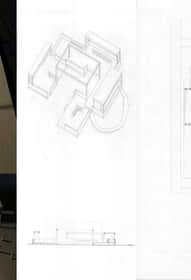
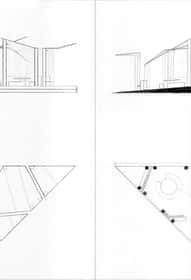
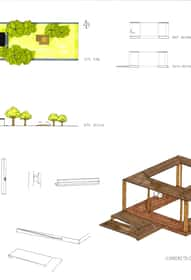
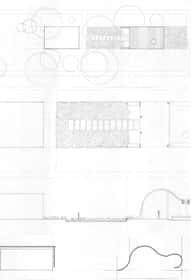
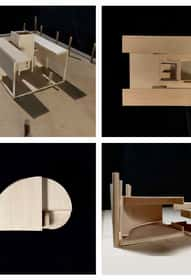
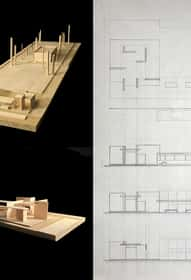
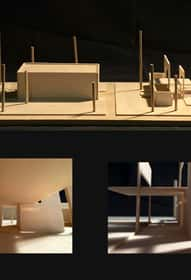
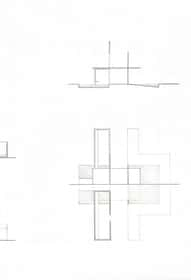
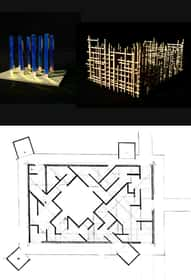
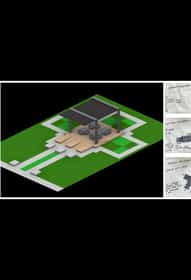
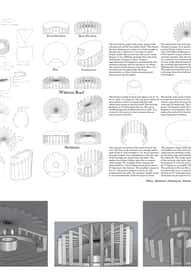
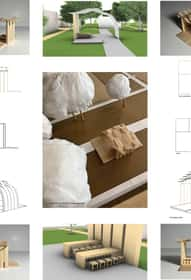
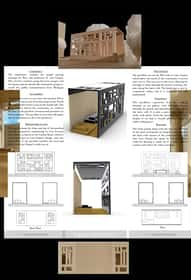
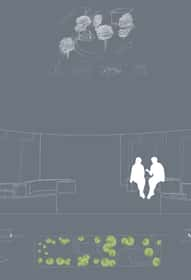
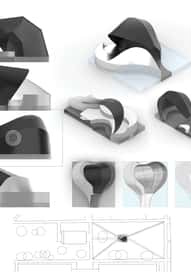
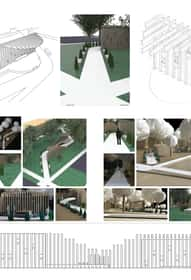
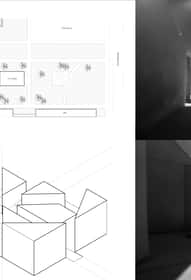
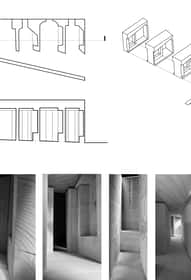
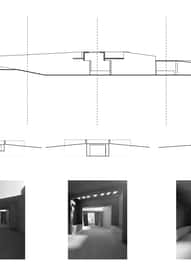
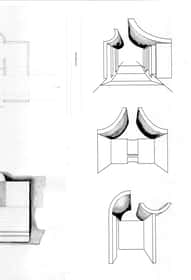
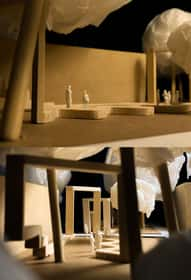
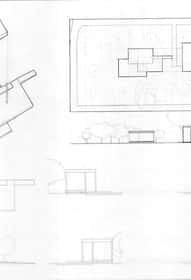
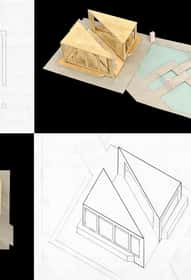
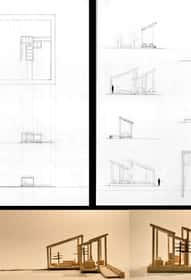
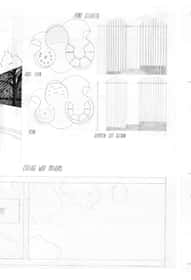
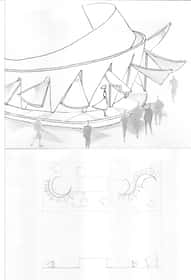
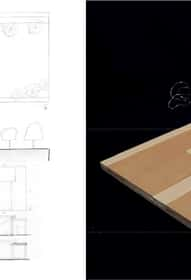
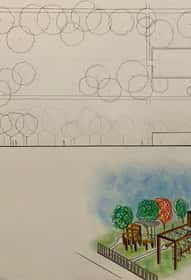
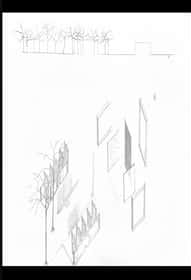
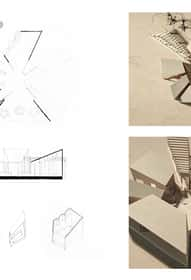
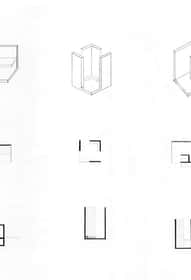
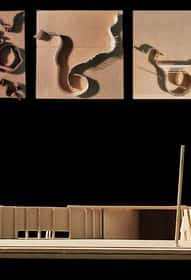
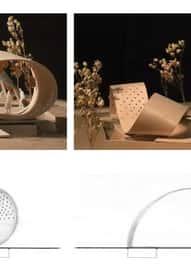
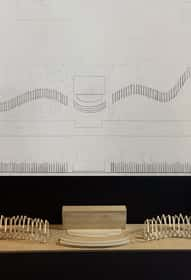
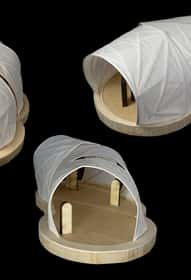
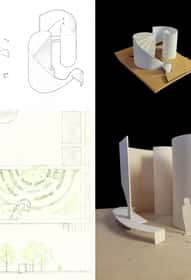
B.ARCH First Year Studio Spring
HomeProfessors:
- Adam Fogel •
- Collen Humer •
- Kristen Landmark Masih
Students:
- Eleana Pena •
- Mitya Vautrin •
- Helen Hauser •
- Rufino Vazquez •
- Aliyan Saleemi •
- Ayesha Ahmed •
- Ajavier Balkum •
- Ian Elvir •
- Hoachen Geng •
- Kurt Simon •
- Kailey Susquisupa •
- Magdalena Wergrzyniak
ARCH 114 ARCHITECTURE STUDIO : SKILLS
ARCH 114, In Architecture Studio II: Unit, students continue to explore fundamental architectural principles and the relationship between human activity, architecture and the environment. The studio further develops students’ iterative design processes, mastery of representational media and methodologies, craftsmanship, graphic and verbal communication, and analytical thinking while establishing connections to other strands of the curriculum.
ARCH 114 builds on the communication skills learned in ARCH 113 and works with students to develop more refined techniques to communicate architectural ideas. The semester begins with a short unit on stairs and vertical movement. We will then do an in-depth analysis of an architectural precedent designed to demonstrate the design process and hone students’ analytic, research, graphic, written and verbal skills. The students will then take these skills to the design of a small community building where we will also examine the ideas of reuse, renovation, infill, and the notion of community. The final assignment will use the skills developed in the first 3 assignments to construct a full-size project in wood, which the students will design and then build.
00 SKILLS
Paralleling the main assignments throughout the term, the skills assignments were designed to sharpen the students’ hand-drawing skills, their eye for composition and their craft. Each assignment consisted of 2 sheets hand-drawn in pencil on gridded paper. The first sheet asked the students to reproduce a given sheet and the second sheet asked them to use the skills acquired in the first sheet, to create a sheet of their own design. As an accompaniment to the drawing skills assignments, the students also did writing assignments. The written assignments were designed to enlarge the students’ architectural vocabulary and make them more articulate, in both written and spoken forms.
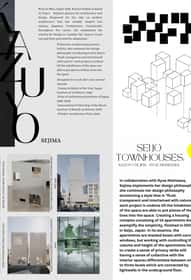
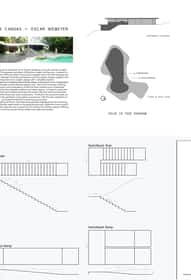
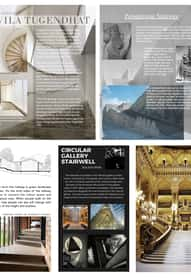
Professors:
- Colleen Humer •
- Dillon Pranger
Students:
- Angelica Conwell •
- Sage Bazer •
- Mitya Vautrin •
- Jessamine Galaraza •
- Dylan Paglee •
- Tariq Ahmed •
- Helen Hauser •
- Rufino Vazquez •
- Aliyan Saleemi •
- Rebecca Kanarski •
- Sofie Parr •
- William Vonsaats •
- Jair Delgado
ARCH 114 ARCHITECTURE STUDIO : COLLAGE
This assignment was an introduction to the subtleties of color. Each student first created a gray scale. They worked with a painting currently on display at the Art Institute of Chicago to create a collage abstracted from the essentials of the painting. The grey scale and collage had to fit within a 15” x 20” board and be constructed of rectangular pieces of colored paper taken from print media. The tiles had to have 1 consistent dimension. The assignment required the students to gain an understanding of the work to be able to abstract its essentials and, in addition, understand how and why color and form were used. The examination of the potential materials for the assignment also gave them a new appreciation for the variety and subtlety of color.
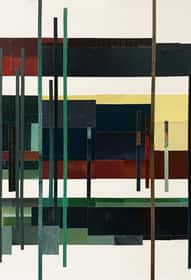
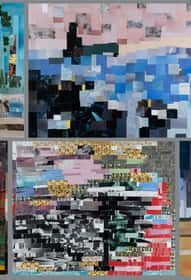
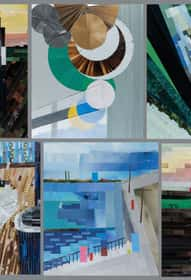
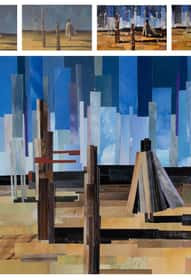
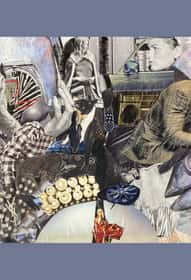
Professors:
- Adam Fogel •
- Alex Paradiso •
- Anthony Hurtig •
- Drew Ranieri •
- Ellen Mills •
- Kirsten Landmark Masih
Students:
- Vinati Tallpragada •
- Shazaib Dawood •
- Emmerson Rice •
- Eleana Pena •
- Ben Koch •
- Ruqiyah Oldejo •
- Benjamin Omark •
- Viktoriya Maneva •
- Aicha Kahack •
- Ronan Schneider •
- Paul Lim •
- Mubarka Ali •
- Puja Sherpa •
- Casey Kowalsky •
- Nicholas Miller •
- Sarah Heo •
- Elizabeth Arriaga •
- Ian Elvir •
- Max Fetrow •
- Magdalena Wergrzyniak •
- Ayesha Ahmed •
- Sophia Halama •
- Margarita Illera Espana •
- Rahel Valdovinos Vega •
- Ajavier Balkum •
- Hoachen Geng •
- Stephanie Guitierrez Ibarra •
- Kurt Simon •
- Kailey Susquisupa •
- Akeyla Harper •
- Jill Cavin •
- Simon Nagi •
- Natalie Kuri •
- Sayeg Jadedon •
- Narain Lucie •
- Sierra Gomez •
- Duyen Tran •
- Mackenzie Nelson •
- Natalie Kuri Sayeg
ARCH 114 ARCHITECTURE STUDIO : COLOR
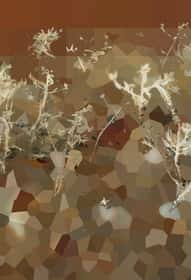
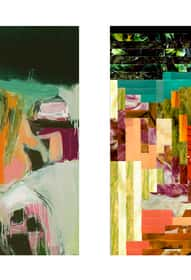
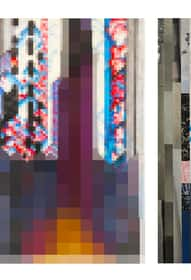
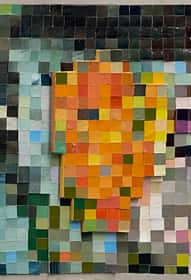
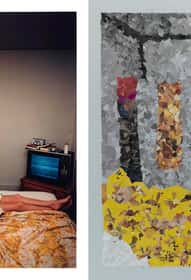
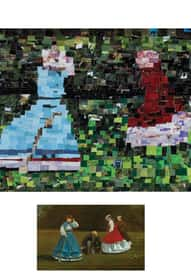
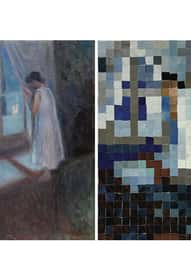
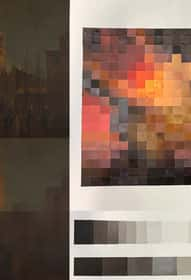

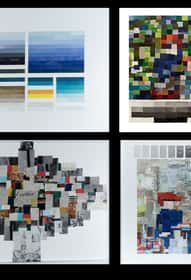
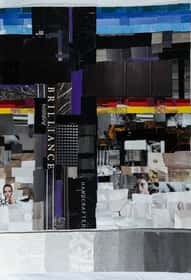
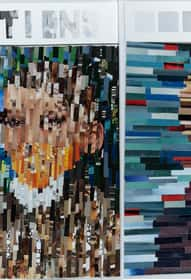
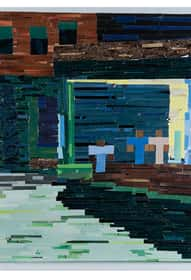
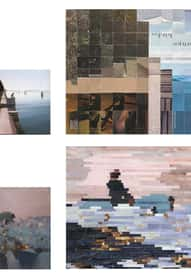
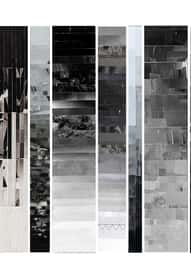
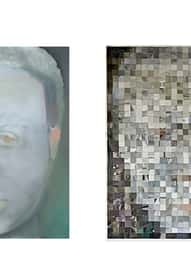
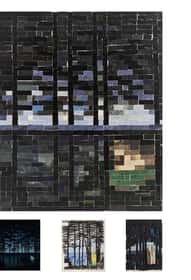
Professors:
- Andres Camacho •
- Adam Fogel •
- Alex Paradiso •
- Anthony Hurtig •
- Collen Humer •
- Dillion Pranger •
- Drew Ranieri •
- Ellen Mills •
- Heidrun Hoppe •
- Kristen Landmark Masih
Students:
- Nurefsan Kirikci •
- Emmerson Rice •
- Dalila Perez •
- Abbey Heichel •
- Yueyi Li •
- Sofia Hernandez •
- Natalie Kuri Sayeg •
- Victoria Pakos •
- Nicole Rendon •
- Miranda Santamaria •
- Aryan Patel •
- Anna Ertsgaard •
- Angelica Conwell •
- Alejandro Martinez •
- Mitya Vautrin •
- Jair Delgado •
- Helen Hauser •
- Dylan Paglee •
- Aliyan Saleemi •
- Viktoriya Maneva •
- Olivia Jameson •
- Nathan Kalman •
- Aicha Kahack •
- Puja Sherpa •
- Paul Lim •
- Elizabeth Arriaga •
- Elijah Paschke •
- Casey Kowalsky •
- Anna Malik •
- Magdalena Wergrzyniak •
- Ayesha Ahmed •
- Suyeon Ji •
- Kacper Drag •
- Diego Barcenas •
- Sarai Arellano •
- Payal Shrirao •
- Abigail Hossler •
- Akelya Harper •
- Kuri Sayeg •
- Simon Nagi
ARCH 114 ARCHITECTURE STUDIO : PRECEDENT
Carefully selected precedents can teach us how to solve specific problems. Through research and analysis, we discover how other architects have addressed issues of site, program, material, or spatial relationships in the particular context of their time and place. Precedent study also hones analytical and graphic communication skills, the skills that are also applied to the generative design process for our own work. In preparation for the design of a small community building in Chicago (Assignment 3), students researched, analyzed and documented first a small and then a larger building chosen from the MCHAP archive, using charrettes, orthographic drawing, analytical diagrams and models, and physical models. The students worked collaboratively and then individually to create a document that demonstrated their explorations on all formats. All students were required to create drawings for the buildings using Rhino, and a document using in-design. The final part of the project required them to synthesize the essential characteristics of the two buildings they had studied and create an original model demonstrating those. This they documented in drawings, with a consideration as to its scale relative to the human body, and everything was gathered into a final document.
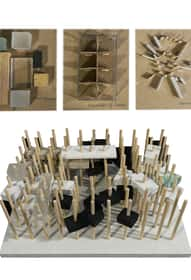
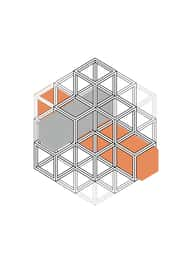
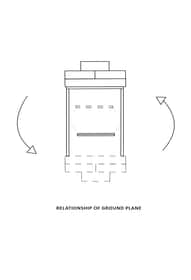
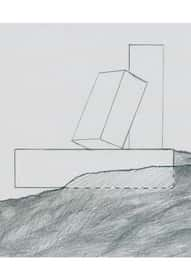
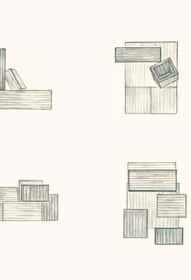
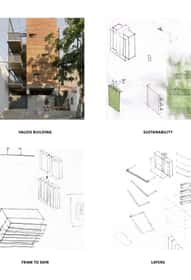
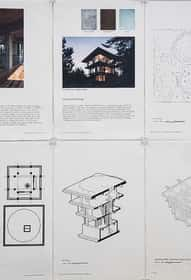
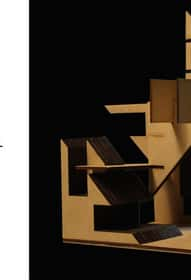
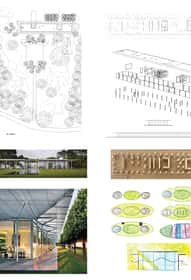
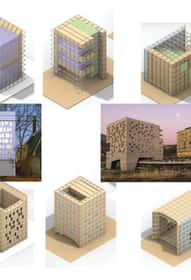
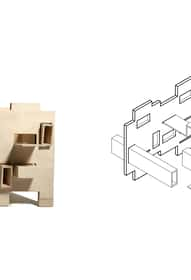
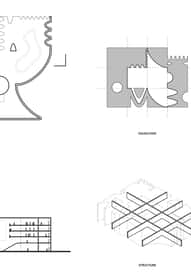
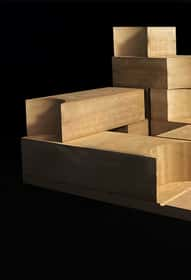
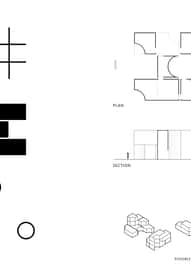
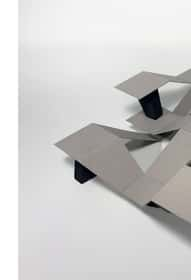
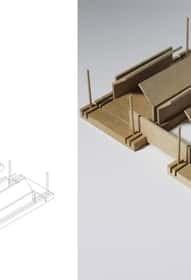
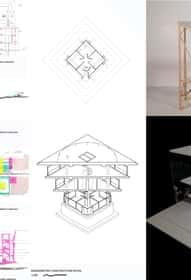
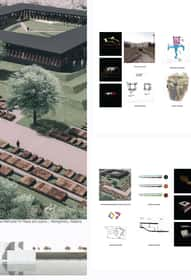
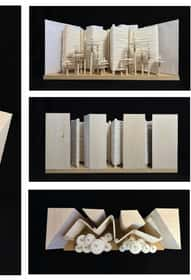


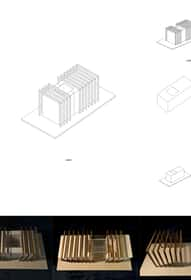
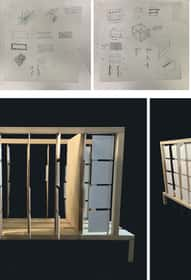
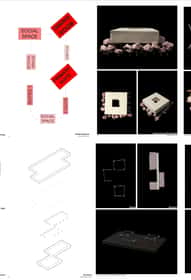
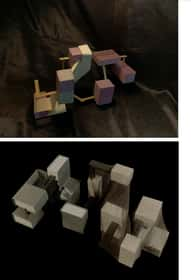
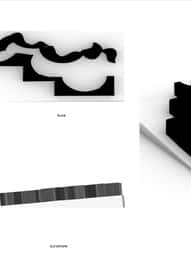
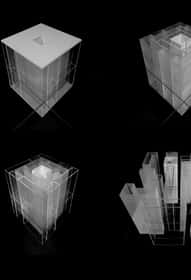
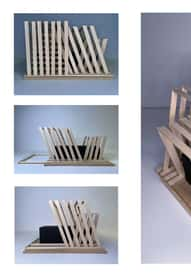
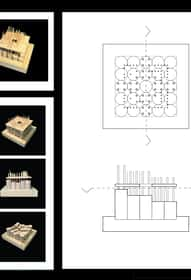
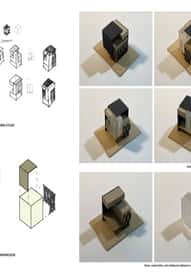
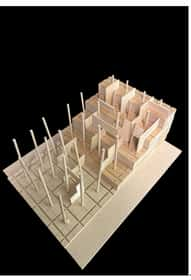
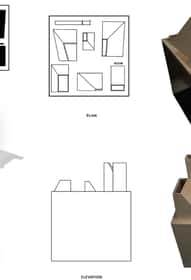
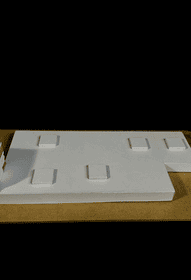
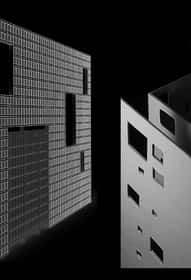
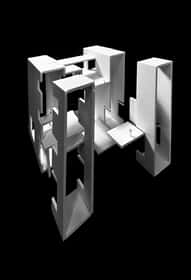
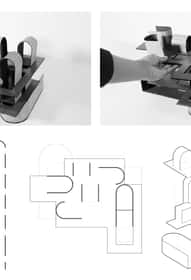
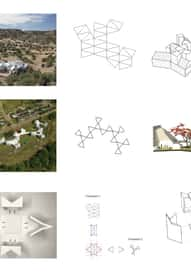
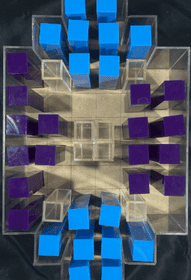

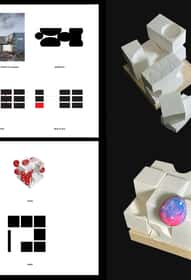
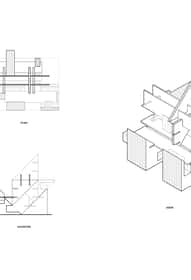
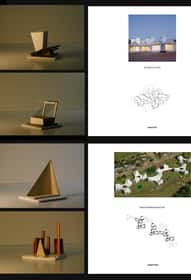
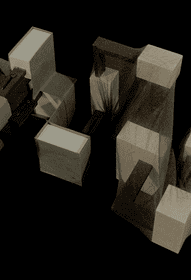
Professors:
- Adam Fogel •
- Alex Paradiso •
- Andres Camacho •
- Anthony Hurtig •
- Colleen Humer •
- Dillion Pranger •
- Drew Ranieri •
- Ellen Mills •
- Heidrun Hoppe •
- Kristen Landmark Masih
Students:
- Emmerson Rice •
- Bryn Oh •
- Ben Koch •
- Amy Lee •
- Morgan Rittenhouse •
- Lauren Jimenez •
- Simon Nagi •
- Natalie Kuri Sayeg •
- Mackenzie Nelson •
- Yeong Lee •
- Tully Davis •
- Simon Freydell •
- Marta Snyder •
- Jillian Pilutti •
- Jasmine Chung •
- Fernanda Rendon •
- Andrew Wu •
- Miranda Santamaria •
- Aryan Patel •
- Anna Ertsgaard •
- Rebecca Kanarski •
- Jair Delgado •
- Helen Hauser •
- Aliyan Saleemi •
- Viktoriya Maneva •
- Olivia Jameson •
- Nathan Kalman •
- Darrion Lee •
- Andrew Nichols •
- Kacper Drag •
- Diego Barcenas •
- Suyeon Ji •
- Kayla Allen •
- Iona Pettigrew •
- Allison Murray •
- Sarah Heo •
- Ronan Schneider •
- Peyton Wade •
- Paul Lim •
- Nicholas Miller •
- Emmett Mach •
- Casey Kowalsky •
- Sophia Halama •
- Margarita Illera Espana •
- Kurt Simon •
- Ayesha Ahmed
ARCH 114 ARCHITECTURE STUDIO : COMMUNITY BUILDING
This project explored the design of a small community space in the Bridgeport neighborhood of Chicago. The primary objective of this space was to encourage interaction between community-based artists. The building would be used year-round, and events would expand into adjacent exterior space during the warmer months with the interior/exterior continuity of spaces strengthening the connection to the neighborhood. The specific focus of the Community Space art program and the relative sizes of individual program elements varied depending upon the site each studio section was assigned, but the building size and types of spaces were consistent between studio sections. Both sites had existing small buildings on them which had to be retained and incorporated into the students’ designs. The size of the total enclosed area was a maximum of 1500 square feet, with additional covered and/or open space and a potential additional 500 square feet in the existing building. The building was required to have an interior level change that was accessed by a staircase and a lift or elevator in order to make it accessible. The final presentation consisted of site research and diagrams, a site model, drawings done digitally and including an exploded axonometric and a basswood component model.
Building
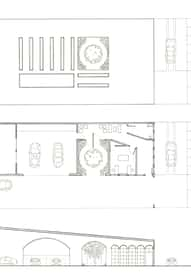
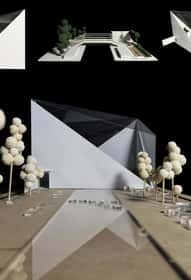
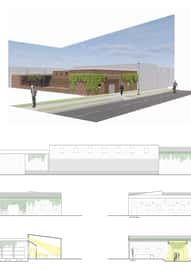
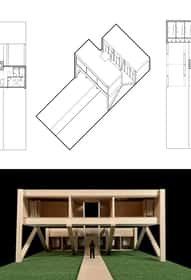
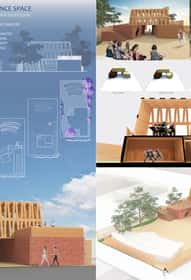
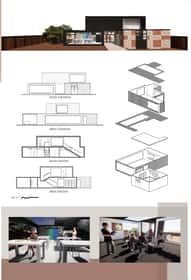
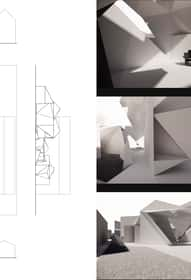
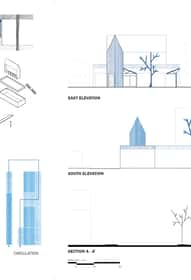
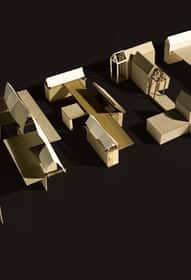
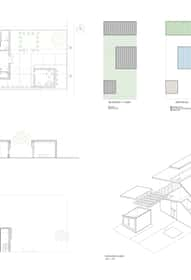
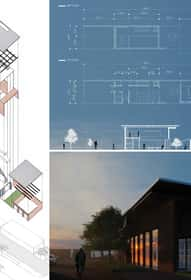
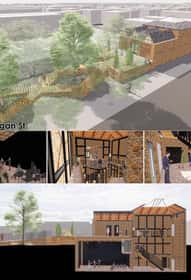
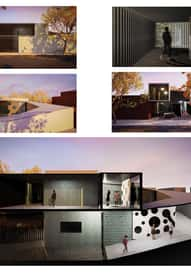
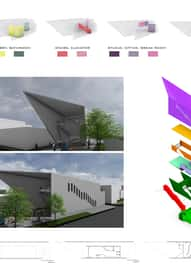
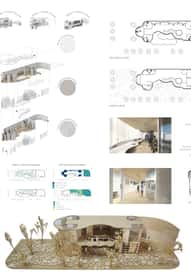
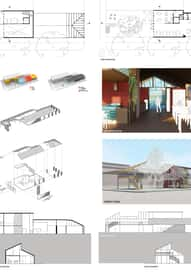
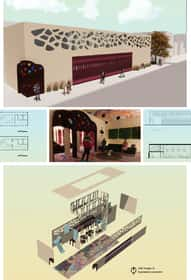
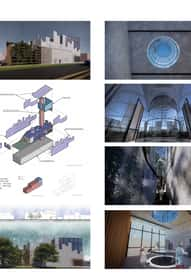
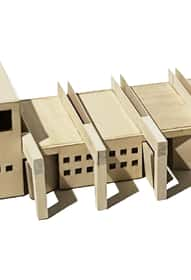
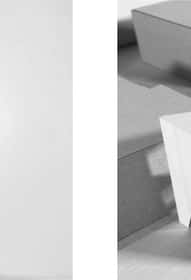
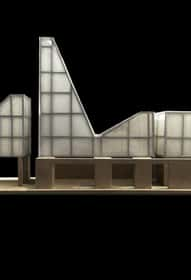
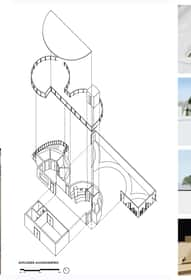



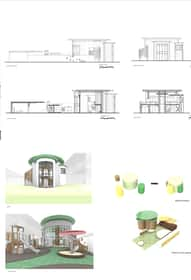
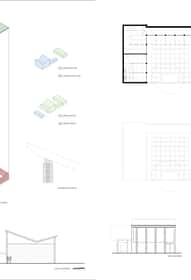
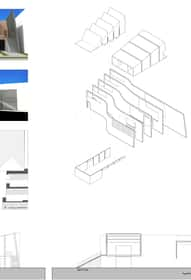
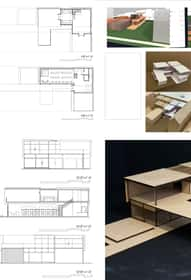
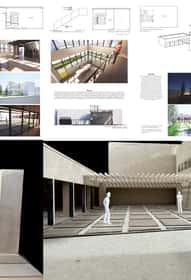
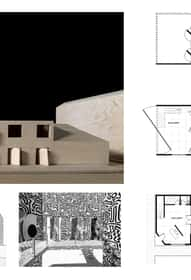

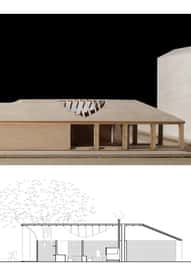
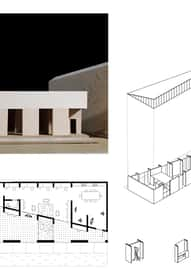
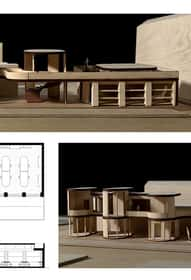
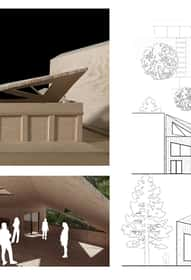
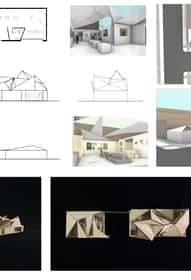
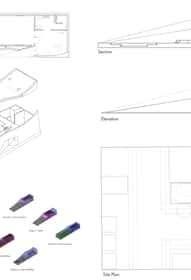
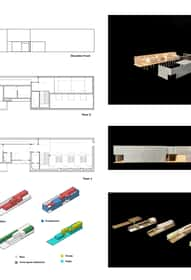
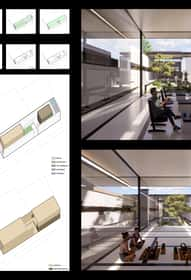
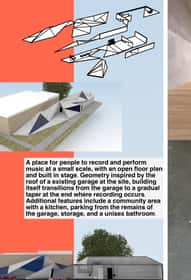
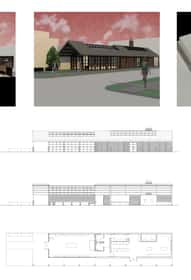
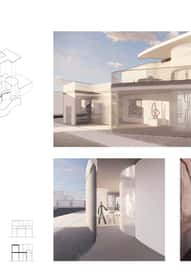
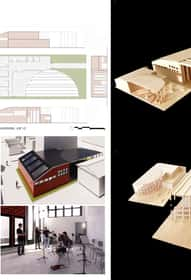
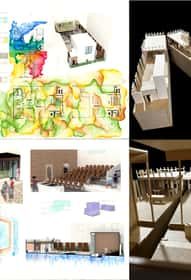
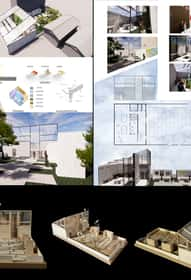
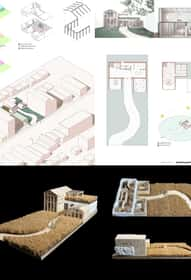
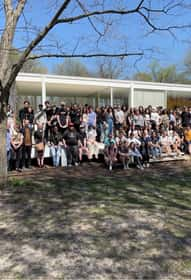
Professors:
- Adam Fogel •
- Alex Paradiso •
- Andres Camacho •
- Colleen Humer •
- Ellen Mills •
- Heidrun Hoppe
Students:
- Emma Balogh •
- Sara Catenoy •
- Isabella Hernandez •
- Sofie Hudon Rivas •
- Lauren Jimenez •
- Yueyi Li •
- Jason Orr •
- Morgan Rittenhouse •
- Trevor Salmi •
- Judai Smith •
- Jonathan Trnka •
- Diego Vizcaino •
- Alapati •
- Allen •
- Barcenas •
- Bhosale •
- Bradlim •
- Drag •
- Hossler •
- Ji •
- Murray •
- Pettigrew •
- Powersrestrepo •
- Tapia •
- Elizabeth Arriaga •
- Sarah Heo •
- Casey Kowalsky •
- Paul Lim •
- Emmett Mach •
- Mubarka Ali •
- Anna Malik •
- Nicholas Miller •
- Elijah Paschke •
- Ronan Schneider •
- Puja Sherpa •
- Peyton Wade •
- Margarita Illera Espana •
- Kurt Simon •
- Kailey Susquisupa •
- Rahel Valdovinos Vega •
- Magdalena Wergrzyniak •
- Ayesha Ahmed •
- Ajavier Balkum •
- Ian Elvir •
- Max Fetrow •
- Hoachen Geng •
- Stephanie Guitierrez Ibarra •
- Sophia Halama •
- Tariq Ahmed •
- Sage Bazer •
- Jair Delgado •
- Jessamine Galaraza •
- Helen Hauser •
- Rebeca Kanarski •
- Dylan Paglee •
- Sophie Parr •
- Aliyan Saleemi •
- Mitya Vautrin •
- Rufino Vazquez •
- William Vonsaata •
- Jill Cavin,Akeyla Harper •
- Narjis Jafferi •
- Natalie Kuri Sayeg •
- Lorentz Lankoande •
- Adam Mulka •
- Simon Nagi •
- Jadedon Narain •
- Mackenzie Nelson •
- Luciana Sierra Gomez •
- Duyen Tran •
- Marcelino Villegas
ARCH 114 ARCHITECTURE STUDIO : DESIGN BUILD
Picking up from the first assignment of first year, the “hut”, students revisited the notion of basic shelter. In the first assignment, a shelter was designed and constructed using basic 1 x 2 x 8’ wood members, a sheet of canvas, and twine. Since the first hut, students had learned that architecture was about much more than basic shelter; it reflects their complexity as a human race. Students in this final assignment were asked to address shelter as a function of the meaningful assembly of parts focused not only on shelter for the few, but also on how individual shelters aggregate to form a community. Students designed and constructed a communal shelter based on a centralized plan; one per ten studio sections using the materials from the original assignment and, in addition, 25-2 x 4 x 8’s and 1 sheet of 4’ x 8’ plywood. The maximum area of each individual unit was 64 sf. and was required to accommodate a minimum of two people and include accommodations for seating or resting and each of the ten individual units was required to be part of a collective whole. The project also investigated the specific spatial conditions of threshold (entry/exit) and opening (view/connection), and displayed a clear structural logic as well as a clear system of enclosure. The project was sited on the west side of the south porch of Crown Hall and required to engage in a meaningful dialogue with its environment and its neighbors.
Build
